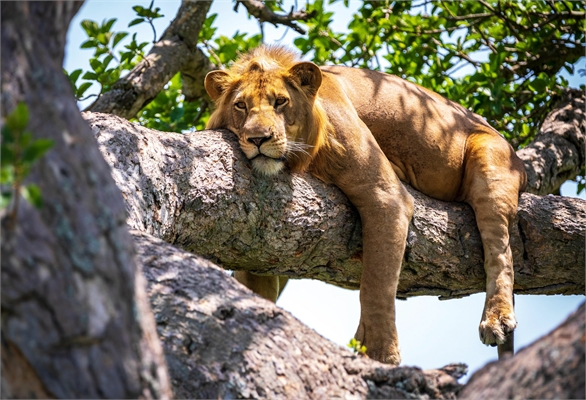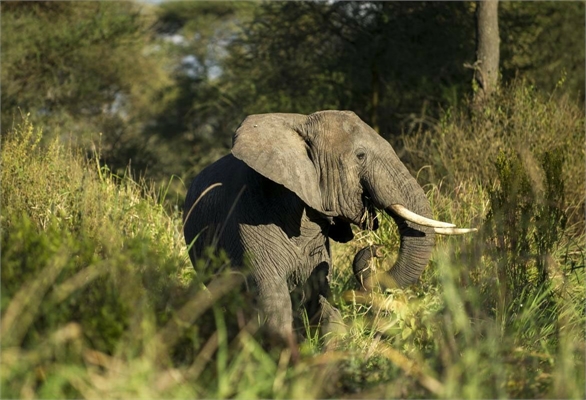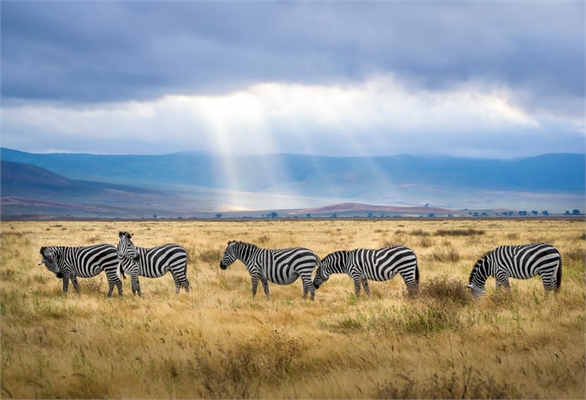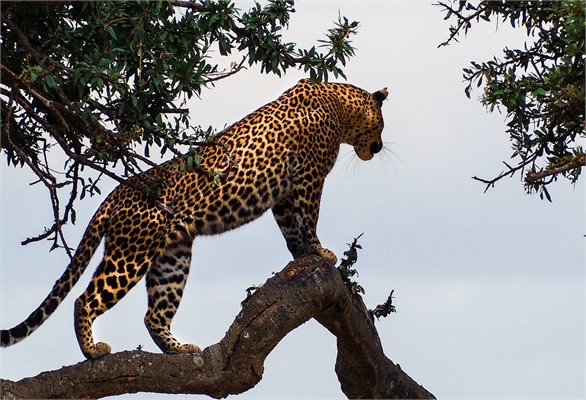Nyerere National Park: A Wilderness Paradise
Deep in southern Tanzania lies one of Africa’s most remarkable natural treasures, Nyerere National Park. Covering over 30,000 square kilometers, it is not only the largest national park in Tanzania but also one of the largest protected wildlife areas in the world. Formerly part of the Selous Game Reserve, this expansive wilderness was renamed to honor Julius Nyerere, Tanzania’s founding father. Nyerere National Park offers an unparalleled safari experience, boasting diverse ecosystems, abundant wildlife, and a profound sense of solitude.
As you enter the park, the sheer vastness of its landscapes leaves a lasting impression. From rolling savannahs and dense woodlands to riverine wetlands and open plains, the park’s topography is a celebration of nature’s diversity. The mighty Rufiji River, Tanzania's largest waterway, cuts through the heart of the park, creating a lifeline for the flora and fauna that thrive here. The river’s network of oxbow lakes, channels, and sandbanks is a defining feature, offering a dynamic backdrop for wildlife viewing.
One of the park's most alluring qualities is its extraordinary wildlife. Nyerere National Park is home to a staggering array of species, making it a dream destination for safari enthusiasts. Large populations of elephants, buffalo, giraffes, and zebras roam freely across its expansive terrain. Predators like lions, leopards, and African wild dogs thrive here, while the park is also a critical habitat for crocodiles and hippos that dominate the Rufiji River’s waters. Birdlife is equally spectacular, with over 440 species recorded, including fish eagles, kingfishers, and the elusive Pel’s fishing owl.
The park’s remoteness enhances its appeal, offering a truly off-the-beaten-path experience. Unlike the busier parks in northern Tanzania, Nyerere National Park allows visitors to explore its vast wilderness in relative solitude. This sense of exclusivity makes game drives, walking safaris, and boat safaris particularly memorable. Each activity immerses you in the raw beauty of the park, whether you’re tracking wildlife on foot, cruising along the Rufiji River, or navigating the park’s winding trails.
The Rufiji River is undoubtedly the lifeblood of Nyerere National Park. Its waters sustain a complex ecosystem that supports countless species. Boat safaris along the river provide a unique perspective, bringing you up close to crocodiles basking on the banks, hippos wallowing in the shallows, and elephants coming to drink. The riverbanks are a hub of activity, with herds of antelope and an array of birdlife gathering at the water’s edge. Sunsets over the Rufiji River are nothing short of magical, as the sky transforms into a palette of warm hues, reflected in the water below.
Walking safaris, a signature activity in Nyerere National Park, are a thrilling way to experience the wilderness. Led by expert guides, these safaris allow you to step into the heart of the ecosystem, connecting with nature on an intimate level. Every rustle of leaves and distant call of wildlife becomes part of the adventure, as your guide shares insights into the flora, fauna, and geology of the park. It’s a humbling and exhilarating experience that reveals the smaller wonders of the wilderness, from colorful insects to medicinal plants.
The park's history is as rich as its biodiversity. Originally established as the Selous Game Reserve in 1922, it was designated a UNESCO World Heritage Site in 1982 due to its ecological significance. Its renaming to Nyerere National Park in 2019 was a tribute to Tanzania’s first president, who was a staunch advocate for conservation. Today, the park represents a vital effort to balance wildlife preservation with sustainable tourism. Conservation initiatives focus on protecting endangered species, combating poaching, and supporting local communities.
Nyerere National Park’s commitment to eco-tourism is evident in its accommodation options. Lodges and tented camps within the park blend seamlessly with their surroundings, offering comfort without compromising the natural environment. Many of these accommodations are situated along the Rufiji River, providing guests with breathtaking views and opportunities to observe wildlife right from their verandas. Whether you choose a luxurious lodge or a more rustic camp, the experience is always immersive, placing you at the heart of the wilderness.
The cultural aspect of visiting Nyerere National Park is equally enriching. The surrounding areas are home to communities that have coexisted with wildlife for generations. Engaging with these communities offers insights into their traditions, daily lives, and efforts to preserve their natural heritage. Many lodges and tour operators work closely with local villages, ensuring that tourism directly benefits these communities while fostering a sense of stewardship for the park’s future.
The best time to visit Nyerere National Park depends on what you wish to experience. The dry season, from June to October, is ideal for wildlife viewing as animals congregate around water sources. The rainy season, from November to May, transforms the park into a lush green paradise, with blooming vegetation and an influx of migratory birds. Regardless of the season, Nyerere National Park promises an unforgettable safari experience, showcasing the beauty and diversity of Tanzania’s southern circuit.
In conclusion, Nyerere National Park is a hidden gem that offers a unique blend of adventure, tranquility, and ecological wonder. Its vast landscapes, abundant wildlife, and cultural significance make it a must-visit destination for those seeking an authentic connection with nature. Whether you’re exploring its savannahs, cruising along the Rufiji River, or simply soaking in the breathtaking scenery, the park invites you to experience the raw, untamed beauty of Africa. Nyerere National Park is not just a destination; it’s a journey into the heart of one of the world’s most remarkable wildernesses.





